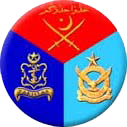History of MES
Birth of MES - Our Predecessors
The concept of the Military Engineer Services dates back to the creation of the Indian Army under the British Crown. In the 18th century and the earlier part of the 19th century, the engineering requirements of the army preponderated over those of other departments, and there came into being a Public Works Department (PWD) under the control of the Military Board in the middle of 19th century. The Corps of Engineers who were entirely military in character manned the department. In 1866, the PWD, which was manned largely by the Military Engineers, was divided into Military Works Branch, Civil Works Branch including Irrigation and Railway Branch.
Military Works Branch was designated as Military Works Services in 1899, and its head, the Director General Military Works (DGMW) had the right of direct communication with the Commander-in-Chief on all matters affecting his Department. Military Works Services was further designated as Military Engineer Services in 1923 and its role is briefly described in the following except taken from Army Instruction of 4 December 1923.
“It has been decided, with the approval of the Right Honorable the Secretary of State of India, to organize the Engineer Services in India under an Engineer-in-Chief who will be borne upon the establishment of Army Headquarters, and will be directly responsible to His Excellency the Commander-in-Chief. The Engineer Services in India consist of the Corps of Sappers and Miners and the Military Works Services. The Military Works Services will be designated as the Military Engineer Services, and will cease to be administered as a Directorate of the Quartermaster General's Branch. The Engineer-in-Chief will be the head of the Corps of Royal Engineers in India, and will retain all the powers and privileges that have from time to time been granted to the Director of Military Works, whose appointment is now abolished"
The organization of the Engineer-in-Chief India during the period 1924 to 1947 was based on the workload of the MES. The whole of India was divided into four MES Commands as follows:-
- Northern Command (Headquarters at Rawalpindi)
- Central Command (Headquarters at Agra)
- Southern Command (Headquarters at Poona)
- Eastern Command (Headquarters at Calcutta)
MES After Independence
At the time of Independence in 1947, when the armed forces of India were reconstituted for allocation to the dominions of Pakistan and India, a broad formula was adopted for distribution of the MES. It was decided that territorially, Northern Command cantonments, with the inclusion of East Bengal and exclusion of East Punjab, would become MES of the Pakistan Army. In consequence of it, mostly, the Northern Command of the MES came under the control of the Engineer-in-Chief of Pakistan.
The control of the Engineer-in-Chief over the Corps of Engineers and MES, as a whole, remained total in all aspects as in India, till 1960. He had only one Director of Works for the three services i.e., Army, Navy and Air Force. The Engineer-in-Chief could expand, detract or reorganize the MES according to the workload in each area.
The period from 1958-1960 was of a great reorganization shake-up for the Pakistan Army and MES. The offices of Engineer-in-Chief and MES branches of the Army, Navy and Air Force, under their respective Director of Works & Chief Engineers (DW&CEs) were approved in 1960 by the Ministry of Defence. They were placed under the functional control of their Service Headquarters. Stores and MES workshops were transferred to Ordnance and Electrical and Mechanical Engineering (EME) respectively. Furniture was transferred to the Quartermaster General’s Branch. Although Engineer in-Chief’s technical control remained ostensibly undisturbed, his practical link with DW&CEs was reduced to a mere technical formality.
DW & CE (Defence Production) was also raised to execute the works for the Defence Production Division in 1972. In the year 2001, re-structuring of MES Army Wing was approved by the Chief of the Army Staff (COAS) and implemented with a view to improve the efficiency of MES. It was also aimed at direct interaction between the main user i.e. formations and MES executives.
